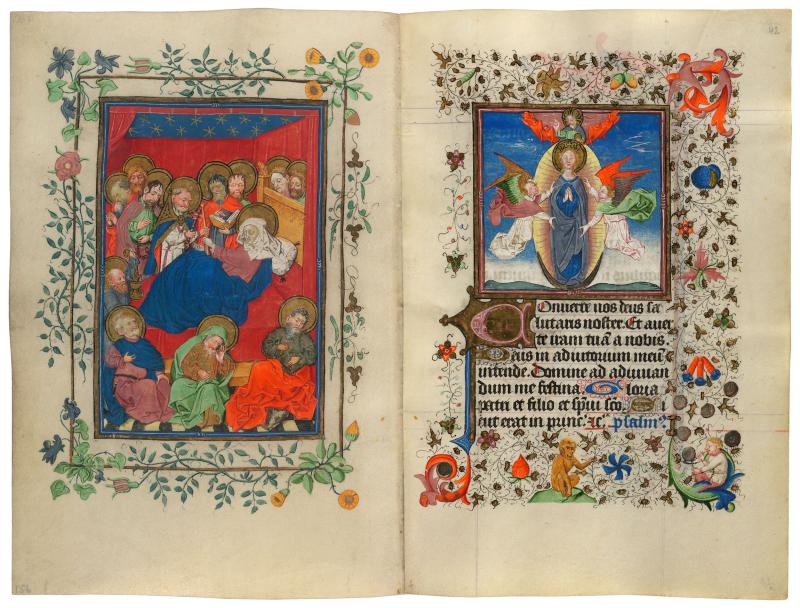
Death of the Virgin
Assumption of the Virgin
Purchased on the Belle da Costa Greene Fund with the assistance of the Fellows, 1963; purchased on the Belle da Costa Greene Fund with the assistance of the Fellows and with special assistance of Mrs. Frederick B. Adams, Sr., Mrs. Robert Charles, Mr. L
At Compline, the last Hour of the Virgin, the Marian narrative jumps to the end of Mary's life. The Virgin dies surrounded by the twelve apostles, who have miraculously arrived from all ends of the earth to comfort her. St. Peter supplies holy water and a lit taper (sinless her entire life, Mary needed none of the Last Rites' sacraments, such as Extreme Unction or Last Communion). The smaller miniature illustrates the Virgin's bodily assumption into heaven. Two angels bear her up to a waiting Christ.
